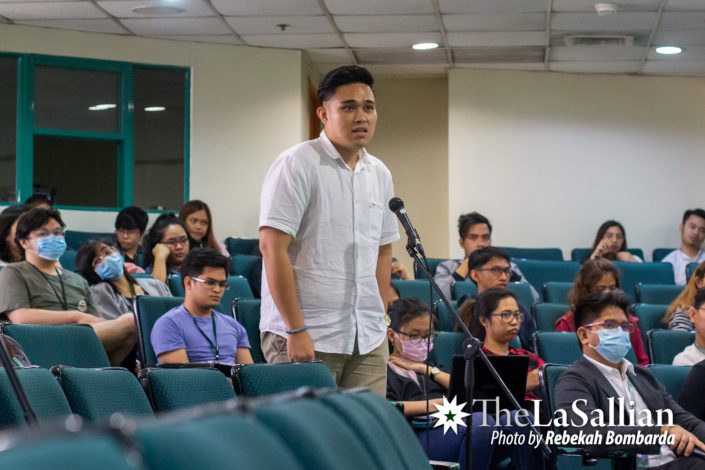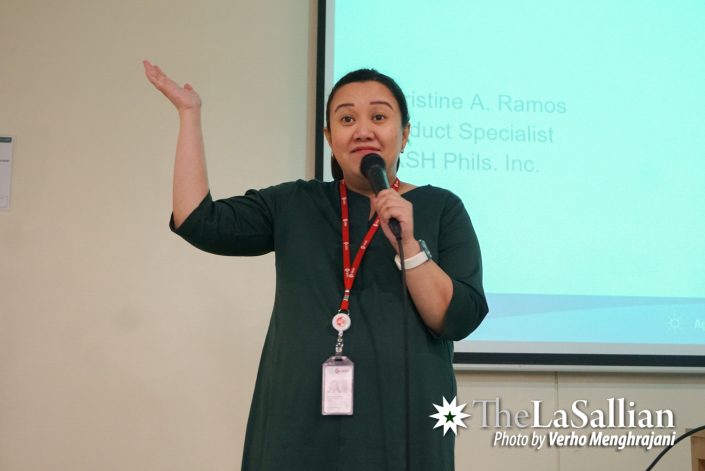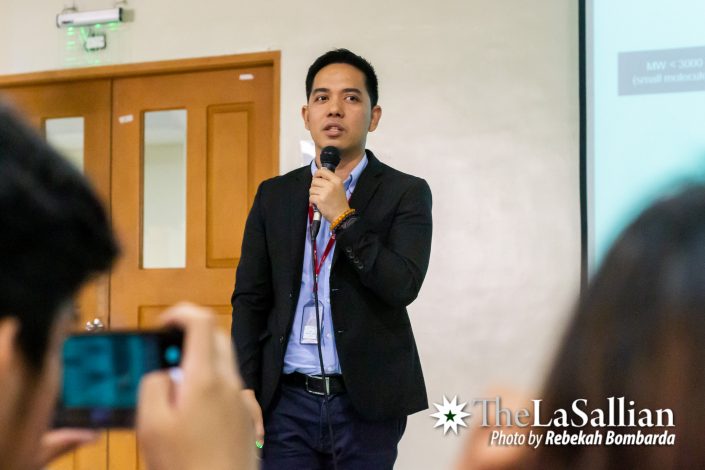Last March 9, a seminar titled Trends and Approaches in Analytical Science, a joint event hosted by the Chemistry Department and the Central Instrumentation Facility of the University, was held at rooms Y407 to Y409, fourth floor of Yuchengco Hall.
The event was composed of a series of lectures that were presented by Dr. Leonel Santos—a Balik Scientist under the Department of Science and Technology’s Philippine Council for Industry, Energy and Emerging Technology Research and Development—as he gave talks on the current trends and recent developments in the field of Analytical Chemistry. Afterward, the event concluded with a discussion on the research prospects of analytical instruments at the Laguna campus.
After graduating from the University of the Philippines Diliman where he completed his Bachelor’s degree in Chemistry, Santos has since accomplished numerous feats on the international stage. He formerly served as the director of the United States Pharmacopeia (USP), where he spearheaded the modernization of the USP monograph—a record that details the composition of medicines approved by the US Food and Drug Administration (USFDA).
Validating alternative procedures
Through method development, Santos helped pave the way for implementing standards for various commercial products, such as over-the-counter medicines. Now returning to the Philippines as a Balik Scientist, Santos’ recent lecture covered the development of alternative procedures in Analytical Chemistry, discussing the verification process involved in formulating new and reliable methods.
“[Regardless of any reason you may have] for developing an alternate method—[which] may be because you want to simplify the sample preparation, or [perhaps because] you want to enhance the precision [and] accuracy—[everything] must be fully validated,” he emphasized.
Santos was then asked by a researcher about the frequency of revalidation needed for an in-house method—a validation approach done by a single laboratory prior to a collaborative trial for a full verification of a substance. Santos recounted that their team was analyzing Chloramphenicol, an antibiotic that aids in the treatment of bacterial infection. However, the values acquired during analysis differed from the results of the compendial test, which are institutionalized methods designed for testing pharmaceutical raw materials and commercial products. He elaborated, “We had to apply systems stability on the spot to a sample of Chloramphenicol because we couldn’t [exactly] match [the results of the tests].”
Santos thus explained that if inconsistencies were to arise between the alternate approach and the compendial test in a comparison test, the results from the compendial tests would take precedence over the outcomes from the alternate procedure. He also reiterated that if the readings from the compendial tests exceed the allowable thresholds, it is imperative that a revalidation test be performed. Such tests, according to the analytical chemist, are crucial to ensuring the quality of formulations of various pharmaceutical products.
Back to basics
Santos also discussed the basics and the significance of impurities, which are unwanted substances that have different chemical properties from the material or compound of interest. These are usually introduced into the product through raw materials, intermediates, or reaction by-products, among others.
These substances not only lower the quality of the product, but also pose health risks due to their toxicity. Santos emphasized how dangerous impurities can be by citing the Thalidomide scandal of 1961. In the early 1950s, thalidomide was introduced as a sedative prescribed for nausea and insomnia in pregnant women. “It was then found to [have caused] severe birth defects in children whose mothers had taken it, so the USFDA banned its use,” stated the scientist.
Right now, the main concern that the pharmaceutical industry is facing is the detection and prevention of impurities. “There is an increased need to make sure that pharmaceutical products are efficacious and safe,” Santos emphasized.
The scientist proceeded to discuss how impurities can be detected, such as through chromatography, which involves separating a mixture into its components so each can be analyzed individually.
A chromatographic system is composed of the mobile phase which moves or carries the substances through the stationary or non-moving phase. Each component, due to their respective physicochemical properties, interacts with the mobile and stationary phases differently; by moving at different rates—with some more easily carried along by the mobile phase, while others are more attached to the stationary phase—the components essentially get separated from each other.

Once abnormalities are detected based on the individual components observed, these impurities can be isolated and evaluated in terms of their level of toxicity.
Santos concluded the talk by providing the audience with references on impurities, including guidelines for the control of impurities, as published by authorities from the pharmaceutical industry, as well as a list of actual and potential impurities along with their different types and classifications.
The lecture served as one of the Balik Scientist’s initiatives toward furthering his advocacy of monitoring developments in Analytical Science that could benefit scientists and industry-wide operations in the country.
Moving forward, Santos plans to continue working with the University to further its efforts in exploring the potential utilization of new laboratory technologies—specifically analytical instruments that may aid in procedures such as chromatography, column chemistry, and atomic absorption spectroscopy—at the Laguna campus.


